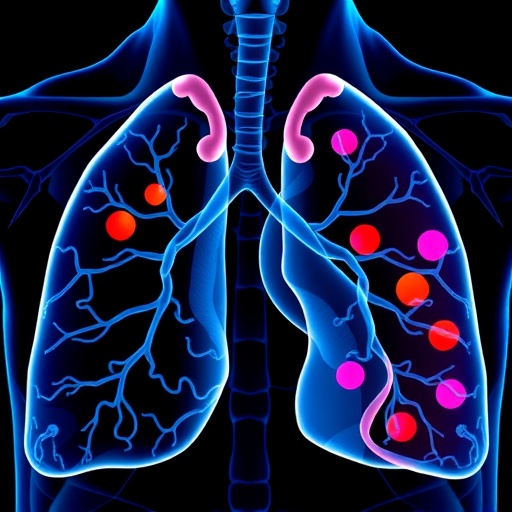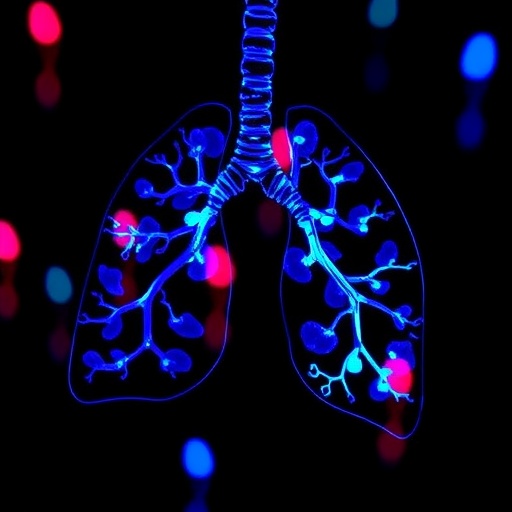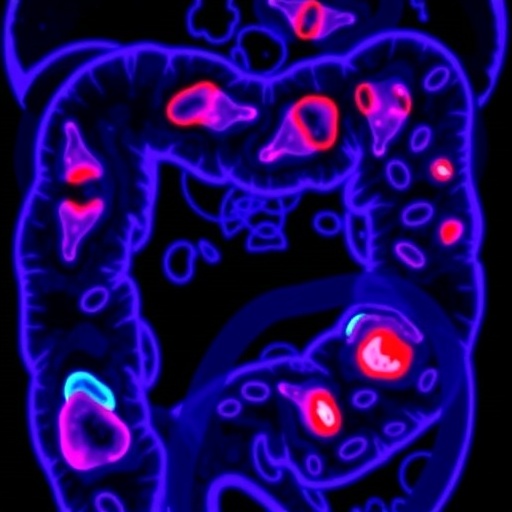In a significant advancement for the treatment of advanced non-small cell lung cancer (NSCLC) harboring epidermal growth factor receptor (EGFR) mutations, newly presented data from the PALOMA-2 trial illuminate the clinical potential of a novel dosing regimen combining subcutaneous amivantamab administered once every four weeks with daily oral lazertinib. This innovative approach, shared at the 2025 World Conference on Lung Cancer (WCLC) hosted by the International Association for the Study of Lung Cancer (IASLC), provides encouraging evidence that less frequent dosing schedules can sustain robust anti-tumor activity while improving patient convenience and reducing side effects typically associated with more frequent intravenous treatments.
The PALOMA-2 trial, particularly its fully enrolled Cohort 5, evaluated the efficacy and safety of the Q4W (every four weeks) subcutaneous amivantamab in combination with lazertinib as a frontline therapeutic strategy for treatment-naïve patients diagnosed with EGFR Ex19del or L858R mutated advanced NSCLC. Amivantamab, a bispecific antibody targeting both EGFR and MET receptors, is designed to inhibit key proliferative and survival signaling pathways in tumor cells displaying these specific genetic alterations. Lazertinib, a potent third-generation EGFR tyrosine kinase inhibitor (TKI), complements this mechanism by selectively targeting mutant EGFR, thereby enhancing the therapeutic impact.
Among the 77 patients enrolled in the study, the median age was 63 years, reflecting a representative patient population, with demographic diversity including 68% female participants and 62% of Asian descent. Notably, 43% of patients presented with brain metastases at screening, emphasizing the real-world complexity and aggressiveness of EGFR mutation-positive NSCLC that necessitates effective systemic therapies capable of penetrating central nervous system compartments.
The dosing schedule analyzed in the trial revealed an impressive objective response rate (ORR) of 82% as assessed by investigators, which was corroborated by independent central review (ICR) confirming an ORR of 87%. These figures signify a substantial anti-cancer effect rarely matched in this heavily studied patient subgroup. Furthermore, the confirmed ORR remained high at 79% by investigator assessment and 83% by ICR. Median time to response was rapid as well, occurring at 8.1 weeks, highlighting the regimen’s ability to induce swift tumor regression.
Importantly, the median duration of response, progression-free survival (PFS), and overall survival metrics were not yet reached at the 6.5-month follow-up mark, suggesting durable benefits that warrant longer observation. The durability of response, coupled with high initial efficacy, reinforces the potential for this regimen to become a new standard of care option that balances therapeutic potency with quality of life considerations.
Safety data from the study underscore the regimen’s favorable tolerability profile. Administration-related reactions (ARRs), a common issue with antibody therapies, were observed in only 12% of participants, with a single Grade 3 or higher event reported, representing a notable reduction compared to prior intravenous or more frequent subcutaneous dosing methods. This reduction in high-grade ARRs signals an important step forward in minimizing treatment-related discomfort and adverse sequelae.
Common adverse events predominantly reflected the expected class effects of EGFR and MET pathway inhibition, including dermatologic manifestations such as paronychia and rash, as well as hypoalbuminemia. These toxicities were generally manageable and consistent with prior experience using these agents. Venous thromboembolic events (VTEs) appeared in 13% of patients but were limited to less severe grades, with no reports of Grade 3 or higher VTE complications, and bleeding events remained rare at a frequency of 1%, further cementing the regimen’s manageable safety profile.
Pharmacokinetic analysis revealed that mean plasma concentration levels of amivantamab with Q4W subcutaneous administration aligned closely with historical data from intravenous and every-two-week (Q2W) subcutaneous dosing schedules. This pharmacokinetic equivalence indicates that the prolonged dosing interval does not compromise drug exposure, adding mechanistic credence to the observed clinical efficacy and safety outcomes.
With just 8% of patients discontinuing therapy due to treatment-related adverse events, the Q4W administration regimen demonstrates not only clinical viability but also a meaningful enhancement of patient adherence potential—a critical factor in chronic cancer management. The subcutaneous route itself, compared to intravenous infusion, affords greater convenience for patients by reducing infusion chair time and associated resource utilization in outpatient oncology settings.
Dr. Susan Scott, leading investigator at The Sidney Kimmel Comprehensive Cancer Center at Johns Hopkins University, emphasized that the trial’s data advocate for the incorporation of Q4W amivantamab dosing as a frontline strategy for EGFR-mutant NSCLC patients, underscoring that this less burdensome treatment model “offers a less burdensome treatment option without compromising efficacy.” According to her, the findings herald not only a therapeutic milestone but also a patient-centric evolution in lung cancer care, improving quality of life through simplified medication schedules.
This development is critically timely considering the ongoing global burden of lung cancer, as EGFR-driven NSCLC remains a prevalent and challenging disease entity with variable responses to targeted therapies. The flexibility and efficacy demonstrated by this subcutaneous Q4W dosing regimen open new horizons for therapeutic optimization and personalized cancer care paradigms.
The PALOMA-2 study’s positive outcomes resonate deeply within the research community, presenting an encouraging avenue for further exploration in subsequent phase trials and real-world clinical applications. The trial reinforces the growing consensus that targeted combinations leveraging antibody-based and kinase inhibitor modalities can deliver synergistic anticancer effects with manageable toxicity, a cornerstone principle in modern oncology innovation.
As the lung cancer field continues to evolve, the implications of these findings are profound: enabling effective control of tumor progression with improved patient experience may transform current treatment algorithms, particularly for the sizeable population of patients newly diagnosed with EGFR-mutant NSCLC, many of whom face rapidly advancing disease and complex clinical scenarios.
Looking ahead, longer-term follow-up and expanded patient cohorts will be essential to confirm the durability of response, overall survival benefits, and to further characterize the long-term safety profile of the Q4W amivantamab plus lazertinib combination. Still, the evidence amassed thus far provides a compelling rationale for healthcare providers to consider and advocate for subcutaneous amivantamab dosing strategies in future clinical practice guidelines.
In conclusion, the PALOMA-2 trial’s presentation at the 2025 WCLC stands as a landmark step forward in the quest to refine lung cancer therapeutics by integrating efficacy, convenience, and tolerability into new treatment paradigms that promise to improve outcomes for patients worldwide.
Subject of Research: Subcutaneous Amivantamab and Lazertinib Combination Therapy for Frontline Treatment of EGFR-Mutated Advanced Non-Small Cell Lung Cancer
Article Title: PALOMA-2 Trial Data Reveal Promising Efficacy and Safety of Once-Monthly Subcutaneous Amivantamab with Lazertinib in Untreated EGFR-Mutated NSCLC
News Publication Date: September 9, 2025
Web References: www.iaslc.org
Keywords: Lung cancer, NSCLC, EGFR mutation, amivantamab, lazertinib, targeted therapy, subcutaneous administration, PALOMA-2, clinical trial, EGFR Ex19del, L858R mutation, quality of life
Tags: advanced non-small cell lung canceranti-tumor activitybispecific antibody therapyEGFR-mutated NSCLC treatmentfrontline therapy for lung cancer.lazertinib combination therapynovel cancer dosing regimenPALOMA-2 studypatient convenience in cancer treatmentside effects reduction in chemotherapysubcutaneous amivantamabthird-generation EGFR TKI





